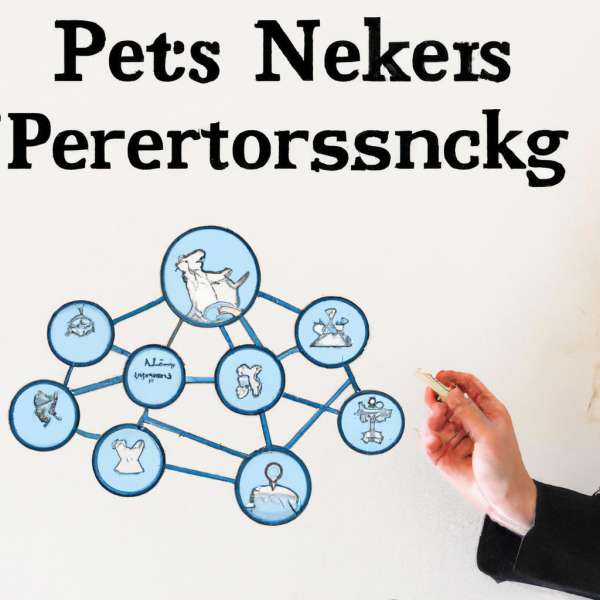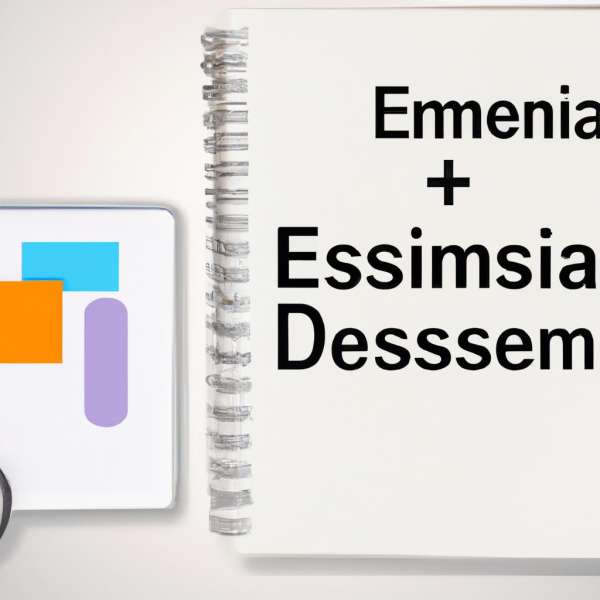Planning for the Future: Securing Your Pet’s Well-being After Your Passing
In the intricate weave of our lives, few connections are as vibrant and treasured as the one we share with our pets. These loyal companions bring joy, comfort, and unconditional love, becoming integral members of our families. As we navigate life’s complexities, it’s crucial to consider the inevitable: what will happen to our beloved pets when we can no longer care for them? While the thought may be unsettling, planning for your pet’s future can offer peace of mind, ensuring they receive the love and care they deserve even after you’re gone. This article will guide you through practical steps to create a comprehensive plan that ensures your furry friends continue to thrive, regardless of life’s uncertainties.

Creating a Lasting Legacy: Understanding Your Pet’s Needs
Taking care of a pet is a lifelong commitment, and understanding their needs is crucial to ensuring they continue to thrive even when you are no longer around. To create a lasting legacy for your cherished companion, it’s essential to consider their physical, emotional, and social well-being. This proactive approach allows you to make arrangements that prioritize their happiness and health.
Start by evaluating your pet’s specific needs, including:
- Dietary requirements: Select an appropriate diet and ensure there is enough food to last for an extended period.
- Healthcare essentials: Identify a trusted veterinarian and keep a record of vaccinations, medications, and appointments.
- Exercise needs: Plan for regular physical activity or playtime tailored to your pet’s breed and energy level.
- Emotional well-being: Consider how your pet thrives socially and emotionally, whether through companionship, activities, or comfort items.
Develop a detailed plan that outlines not only who will care for your pet but also how their needs will be met. Here’s a simple table to help you organize this information:
| Care Aspect | Details | Caregiver |
|---|---|---|
| Feeding | Specific diet requirements and feeding schedule | [Name of Caregiver] |
| Exercise | Type and frequency of exercise needed | [Name of Caregiver] |
| Healthcare | Veterinary contact and ongoing medical care | [Name of Caregiver] |
| Emotional Care | Routine for companionship and comfort items | [Name of Caregiver] |
By dedicating time to this planning process, you not only ensure a smooth transition for those you leave behind but also provide peace of mind knowing that your beloved pet will continue to receive the love and care they deserve.

Building a Support Network: Choosing Caregivers for Your Pet
When planning for your pet’s future, one of the most critical steps is assembling a reliable support network of caregivers. This group will ensure your furry companion receives the love and care they deserve, even after you’re no longer able to provide it. Start by identifying potential caregivers in your life. You might consider:
- Family and friends: Look for individuals who understand your pet’s needs and have experience with animals.
- Professional pet sitters: These trained caregivers can step in seamlessly, providing companionship and proper care.
- Local shelters or rescue organizations: Many have programs that can assist in placing pets after their owner’s passing.
- Neighbors: Sometimes the best help comes from those closest to you, who may have volunteered to watch over your pet in the past.
Once you have a list of potential caregivers, it’s imperative to assess their suitability. Evaluate their compatibility with your pet through conversations and introductions. You may also want to:
- Discuss lifestyle and availability: Ensure the caregiver has the time and flexibility to meet your pet’s needs.
- Understand their experience: Ask about their prior experience with pets, especially if your animal has specific requirements.
- Evaluate their commitment: Ensure they are willing to take on the responsibility for the long term.
By carefully selecting and preparing your pet’s future caregivers, you can rest assured that your beloved companion will continue to receive the care and attention they need, even in your absence.
their approach: Pay attention to how they engage with your pet; it’s crucial that they exhibit a gentle and affectionate attitude.
To streamline your decision-making process, consider creating a straightforward table to organize this information:
| Caregiver | Experience Level | Availability | Notes |
|---|---|---|---|
| Family Member | Moderate | Weekends | Owns a dog |
| Professional Sitter | High | Flexible | Certified in pet first aid |
| Friend | Low | Evenings | Eager to learn |
| Neighbor | Moderate | Weekdays | Experienced with cats |
Building a reliable support network isn’t just about finding anyone; it’s about ensuring your pet’s needs are met with compassion and dependability. Invest time in nurturing these relationships, and don’t hesitate to arrange trial periods where the caregiver can spend time with your pet under your supervision. This way, both you and your pet can feel confident in the care arrangements you’ve set up.
Comprehensive Documentation: Preparing Essential Information
To ensure your cherished pet is cared for according to your wishes, it’s crucial to compile detailed documentation outlining their needs, preferences, and the arrangements you’ve made. This information should be easily accessible and clear to anyone stepping into the caregiver role. Here’s what to include:
- Personal Care Instructions: Document your pet’s daily routine, feeding schedule, and any special dietary requirements.
- Veterinary Information: Provide the name and contact details of your veterinarian, along with any relevant medical history, allergies, or medication needs.
- Insurance and Financial Arrangements: Clarify any pet insurance policies in place and how to access funds for ongoing care.
- Emergency Contacts: List reliable friends, family, or pet sitters willing to step in and help, along with their contact information.
Creating a Pet Care Manual that includes essential information in a structured format can also be beneficial. This document can serve as a guide for caregivers, providing all necessary details in one place:
| Section | Details |
|---|---|
| Daily Routine | Walks: 7 AM & 6 PM; Meals: 8 AM & 5 PM |
| Favorites | Toy: Red ball; Treats: Greenies |
| Health Records | Current vaccinations & medication schedule |
| Emergency Procedures | Steps for handling allergies or emergency situations |
By preparing this essential documentation, you not only ease the burden on those you leave behind but also ensure your pet continues to receive the love and care they deserve. Remember to keep this information updated and inform those close to you about its location, so it’s readily available when needed.

Financial Planning: Ensuring Your Pet’s Future Well-being
When considering your pet’s future, it’s essential to address both emotional and financial aspects. Securing the necessary resources to care for your beloved animal after you’re no longer around requires careful planning. Here are some strategies to ensure their continued welfare:
- Pet Trusts: Setting up a pet trust can allocate funds specifically for your pet’s care. This legal framework allows you to determine the amount of money designated for their caregiver and outline how the funds should be utilized.
- Life Insurance Policies: Certain life insurance policies permit you to name your pet as a beneficiary, ensuring that funds are available for their care after your demise.
- Dedicated Bank Accounts: Opening a savings account solely for pet care can be advantageous. Clearly label it for pet expenses and appoint a reliable person as the beneficiary.
- Consistent Contributions: Regularly contributing to your pet’s fund can help build a financial buffer over time.
To accurately estimate the costs associated with your pet’s future care, it’s important to compile a detailed list of potential expenses. This should include veterinary bills, food, grooming, and other routine care costs. Creating a rough financial estimate can be extremely helpful:
| Expense Type | Estimated Yearly Cost |
|---|---|
| Veterinary Care | $500 – $1,000 |
| Food & Supplies | $300 – $600 |
| Grooming | $200 – $400 |
| Boarding & Pet Sitting | $400 – $800 |
By considering these options thoughtfully, you can provide peace of mind for yourself and the caregiver you choose to look after your cherished pet.
Conclusion
As we navigate the complexities of life, planning for our pets’ futures can seem daunting. However, taking proactive measures to ensure their well-being after we’re gone is not only an act of love but also a crucial responsibility that honors the bond we share with our furry friends. By creating a clear plan, communicating your wishes, and appointing a trusted caregiver, you can provide peace of mind for yourself and security for your pet. The love we give them extends beyond our lifetimes, empowering their future and allowing our legacies to live on through their joyful presence. In planning for pet care beyond our years, we not only secure their happiness but also reinforce the enduring human-animal connection—a testament that love transcends time. Take the time today to prepare with compassion, and rest assured knowing you’ve created a safety net of care for your beloved companion.
Ensuring Your Pet’s Future: A Guide to Planning Their Care After You’re Gone
The Importance of Planning for Your Pet’s Future
As a responsible pet owner, it’s crucial to think about your pet’s wellbeing even when you’re no longer around. Planning for your pet’s future ensures that they receive the love, care, and attention they deserve. Investing time to make these arrangements can bring you peace of mind and guarantee a secure future for your furry companion.
Legal Measures to Ensure Pet Care
To legally ensure your pet’s care, consider the following legal instruments:
- Pet Trusts: A Pet Trust is a legal arrangement that provides for the care and maintenance of your pet. You can allocate funds and appoint a trustee who will manage these funds for your pet’s benefit.
- Will Provisions: Include specific instructions in your Will about who should care for your pet and allocate funds for their care. Ensure this is legally documented and updated regularly.
- Power of Attorney: Assign Power of Attorney to a trusted person who can make decisions regarding your pet’s care in case you become incapacitated.
Choosing the Right Caregiver
Evaluate Potential Caregivers
Choosing the right person to take care of your pet is one of the most important decisions. Consider these factors when evaluating potential caregivers:
- Experience with pets: Ensure they have sufficient experience in handling pets, specifically the type you own.
- Availability: Confirm their availability to care for your pet regularly and responsibly.
- Living Conditions: Assess their living environment to ensure it is suitable for your pet.
- Affection for Animals: Gauge their genuine affection for animals and willingness to assume responsibility.
Financial Arrangements
Estimate Future Expenses
Pet care can be financially demanding. Estimate future expenses to ensure your pet can maintain a comfortable lifestyle. Consider the following:
- Food and Nutrition: High-quality pet food, supplements, and special diets.
- Healthcare: Regular vet visits, medications, insurance, and emergency treatments.
- Grooming: Regular grooming needs, especially for high-maintenance breeds.
- Other Necessities: Toys, beds, accessories, and any additional training.
Setting Up a Pet Trust
A pet trust allows you to set aside funds specifically for your pet’s care. Here is a sample structure:
| Component | Description |
|---|---|
| Trustee | Individual or organization managing the funds. |
| Caregiver | Person responsible for the day-to-day care of your pet. |
| Beneficiary | Your pet. |
| Funds | Allocated money for pet’s care, including a contingency plan. |
Make sure the trust is legally binding and adhered to state laws for pet trusts.
Benefits and Practical Tips for Planning Your Pet’s Future
Peace of Mind
Knowing that you have a solid plan for your pet’s future provides tremendous peace of mind. You’ll be reassured that your beloved companion will be well taken care of.
Choosing Back-Up Caregivers
Having a back-up caregiver is essential in case the primary caregiver is unavailable. Ensure this person is also familiar with your pet’s habits, likes, and dislikes.
Create a Detailed Care Plan
Draft a comprehensive care plan and share copies with caregivers, trustees, and your veterinarian. Your plan should include:
- Daily Routines: Feeding times, exercise, and sleep patterns.
- Medical Information: Health history, medications, and vet contact details.
- Preferences: Favorite toys, activities, and comfort items.
First-Hand Experiences
Case Study: Jane’s Peace of Mind
Jane, a pet owner of a Golden Retriever named Max, decided to set up a pet trust after a sudden health scare. She designated her sister as the trustee and a close friend as the caregiver. Jane’s detailed plan included Max’s diet, grooming schedule, and medical history. When Jane unfortunately passed, Max was seamlessly transitioned to his new home, and continues to enjoy his days, comforted by familiar routines.
Resources and Contacts
Finding Legal Assistance
It’s paramount to consult with a lawyer specializing in pet trusts and estate planning. Here are some recommendations:
- American Bar Association’s estate planning section.
- Pet-specific legal guides: ASPCA Pet Planning.
- Your local animal welfare organizations.
Pet Care Services
Consider engaging with pet care services to ensure continuous care:
- Pet Insurance: Providers like Embrace Pet Insurance.
- Veterinary Services: Maintain an ongoing relationship with a trusted veterinarian.
- Grooming: Local grooming establishments that understand your pet’s needs.
Support Groups
Join pet-owner support groups to share experiences and gather advice:
Final Note
Ensuring your pet’s future is an act of love and responsibility. By meticulously planning and leveraging available resources, you can provide your furry friend with a secure and happy future, even in your absence. Take the necessary steps today to ensure your pet’s world remains filled with care and comfort.


